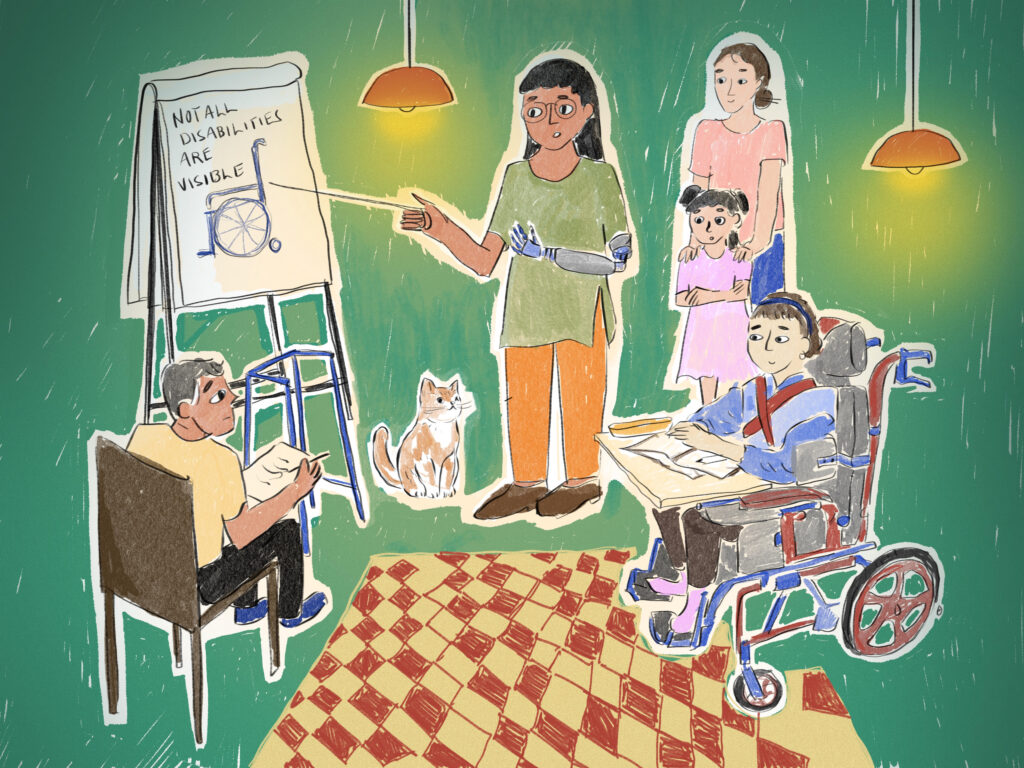The Raising Learning Outcomes (RLO) Programme emerged as a response to the global learning crisis. Launched in 2014 as a strategic partnership between the UK Foreign, Commonwealth and Development Office (FCDO) and the Economic and Social Research Council (ESRC), a number of RLO researchers revealed some of the often-invisible barriers that prevent children from fully accessing education.

Beyond physical accessibility, this initiative uncovered deep-rooted misconceptions about learning capabilities that limit opportunities for students, particularly those with disabilities. What emerges is a powerful blueprint for transforming educational systems to truly include and empower every learner.
Here are five critical strategies that the research uncovered, which offer an approach to inclusive, equitable, and effective educational systems that recognise and support the unique learning journeys of all students:
Empowering teachers through professional development
At the heart of transforming education for children with disabilities lies the critical need to equip teachers with the necessary skills and knowledge to support students with impairments. Ongoing professional development programs can focus on differentiated teaching methods, classroom accommodations, and understanding various impairments to enhance teachers’ confidence and competence in meeting diverse learning needs. Through comprehensive training, teachers can develop the expertise to create truly inclusive learning environments that celebrate and support diverse learning styles.
Recognising interconnected challenges
Disability doesn’t exist in isolation. Research from India and Pakistan mapped how different forms of disadvantage intersect and compound each other, creating intricate barriers to education. The research revealed how gaps in learning between children from more and less advantaged households begin in the early years of education, with poverty, gender, disability, and location working together to reinforce these disparities.
For instance, while many children with disabilities are enrolled in mainstream schools, their chances of being in school remain lower than their peers, and the disability-learning gap is particularly significant for literacy. The evidence highlights the critical need for regular collection of data that captures how disability intersects with other markers of disadvantage.
Engaging communities in inclusive education
A critical aspect of RLO is the active involvement of families and communities in the educational process. In research carried out in Malawi, community-based childcare centres (CBCCs) demonstrate the transformative potential of local ownership in education. Caregivers in these centres have noted the significant value of children with disabilities observing and playing with their peers and accessing toys, highlighting how all children – both disabled and non-disabled – benefit from this interaction.
Parents of children with disabilities emphasised the importance of CBCC attendance for their children’s interaction, learning, and future development, despite various challenges including stigma and resource limitations. We know that through workshops, informational sessions, and support networks, families can be empowered to support their children’s learning at home and collaborate with teachers to develop individualized learning strategies for students with Impairments.
This community-based approach has shown that when caregivers are trained in inclusive educational practices, the impact extends to increased independence, improved social interactions, and enhanced confidence for children with disabilities.
Rethinking communication
In India, Ghana, and Uganda, RLO researchers explored new approaches to language learning through their ‘Peer-to-Peer Deaf Multiliteracies’ project. Starting in 2016, the research investigated teaching English literacy to deaf young adults using a ‘real literacies’ approach based on everyday written language like billboards and public notices. This approach rethinks communication strategies for disability-inclusive education by prioritising deaf learners’ natural language environments.
The impact has been significant: researchers have worked on curriculum committees of the National Institute of Open Schooling to create materials for Indian Sign Language as a first language (with 10th grade implemented, 12th grade ready, and grades 3, 5, and 8 in development)—marking the first time ISL is taught as a first language in India. They’ve also partnered with the Happy Hands School for the Deaf to implement English literacies and ISL in a deaf primary school, extending their work to children.
The project exemplifies deaf-led practice in education, demonstrating how communication isn’t about compensating for perceived limitations but recognising deaf sign language users’ capacity to contribute crucial skills while fostering South-South collaboration.
Building strong policy frameworks
Sustainable change requires robust policy support at all levels and there is a critical need for advocacy to strengthen local, national, and international policies that feasibly support disability inclusion in education. Through collaborating with governments and education ministries and schools, we can advocate for policy changes that ensure funding, resources, legal frameworks and involvement of the end consumers are in place to realise effective education initiatives. This systemic approach ensures that individual initiatives can scale and sustain their impact across entire education systems.
These five insights reveal a fundamental truth: true educational inclusion goes beyond accommodation. It demands a radical reimagining of learning—one that sees diversity as strength, not a problem to be fixed. By cantering the experiences of those most marginalised, we can create educational systems that are more flexible, responsive, and meaningful for all students.
The educational innovations happening “on the fringes” often serve as frontrunners for broader transformation, showcasing how democratisation of educational spaces can lead to powerful new approaches. When we shift agency to traditionally excluded communities, we don’t merely expand access—we fundamentally enrich the educational landscape with perspectives and methodologies that challenge conventional wisdom.
The path to better education isn’t about making exceptions, but about designing systems that embrace every learner’s unique potential and recognise that educational innovation often emerges from those navigating the peripheries of established systems.
